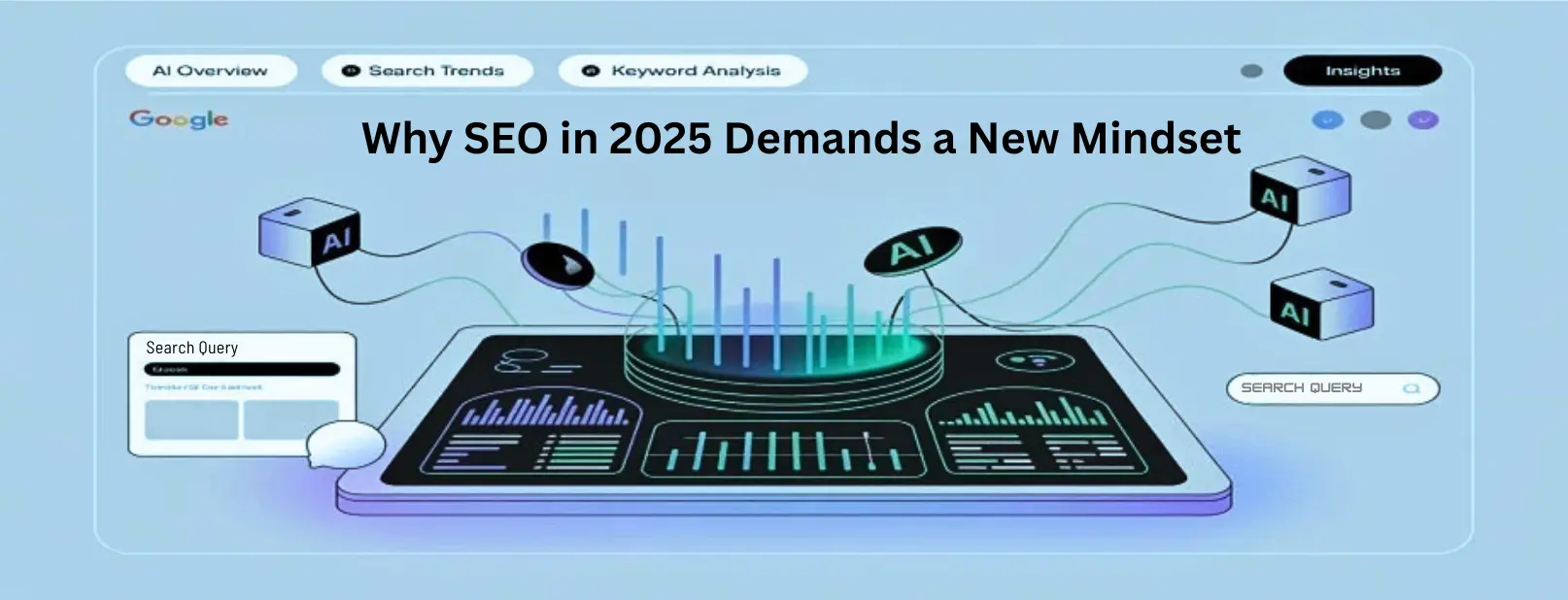
Search Engine Optimization (SEO) has entered a defining era. The rise of AI Overviews - Google’s generative AI feature that summarizes search results - is not just a design update; it’s a structural shift in how users access and interact with information. Instead of scrolling through links, users are now greeted with AI-generated answers directly on the search results page.
This change poses a new challenge: How do you stay visible when your content is used to answer the query, but your link isn’t always clicked?
The answer lies in adapting your SEO strategy around AI-first indexing, semantic clarity, structured data, and expert content. Businesses and creators who fail to optimize for these systems risk losing organic visibility, even if their content remains technically sound.
Google’s AI Overviews summarize multiple web sources into a single, synthesized block of information at the top of search results. This means that users may get their answer without ever clicking on a website, a phenomenon called zero click search.
What’s at stake here is visibility. If your content is used by AI to generate its summary, you gain trust but you may lose traffic if not strategically positioned. However, with proper formatting and authority, your content can still drive brand awareness and even clicks from curious users.
Key Takeaway:
To be cited in AI Overviews, your content must be clear, concise, and semantically aligned with user intent.
Traditional keyword stuffing has lost all value. Google’s generative AI reads content for meaning and relationships, not just keywords. This is called Semantic SEO, and it plays a critical role in whether your site appears in or contributes to AI Overviews.
How to Apply Semantic SEO:
Use topic clusters and related terms naturally
Optimize headers (H2, H3) to reflect common questions
Ensure internal linking supports content relationships
If your content clearly answers intent-driven questions like “how,” “why,” and “what,” it has a higher chance of being parsed and cited by Google’s AI.
AI Overviews lean heavily on structured data to understand which content is credible and contextually relevant. If your content lacks schema markup, it may never surface - even if it’s well written.
Key Schema Types to Add:
FAQPage for question answer formatsHowTo, Article, and WebPage schemas for topical relevanceSpeakable markup to enable voice search snippetsWith the right schema in place, Google can confidently extract and repurpose your content in AI Overviews.
Google’s AI doesn’t just look at what you say it evaluates how trustworthy and accurate you are. Your content needs to reflect E-E-A-T principles: experience, expertise, authoritativeness, and trustworthiness.
To Build E-E-A-T in 2025:
Use real author bios with credentials
Cite sources and link to credible data
Maintain consistency in tone and messaging
Pages with shallow content, outdated stats, or no author transparency will gradually be excluded from AI Overview citations.
While AI Overviews are more complex, many of the principles from Featured Snippet optimization still apply - and now they matter more than ever.
Actionable Tips:
Answer questions in 30–50 words right below the heading
Use bullet points and numbered lists for instructions
Include keywords in your subheadings and URL slugs
Featured snippets are often the data points Google’s AI pulls into overviews. Ranking for them now is your gateway to being included in the future of search.
The reality of 2025 is that many users never leave the search results page. But that doesn’t mean your content can’t influence decisions and build trust, even without the click.
Tactics to Maximize Zero Click Value:
Place branding elements (like your company name, awards, or certifications) within the content
Use unique phrasing that encourages brand recognition when cited
Add internal CTAs such as “learn more on our site” that may still display in AI citations
Your goal is not just to drive traffic - it's to own the narrative within the AI’s generated summary.
To get featured in AI Overviews, format parts of your content specifically for machine understanding. These should be brief, specific, and complete answers placed immediately below relevant headings.
Best Practices:
Keep answers under 50 words
Use conversational tone and clarity
Back up claims with data or examples when relevant
Example:
Q: What is an AI Overview?
A: An AI Overview is Google’s AI-generated summary of top web content that provides direct answers to user queries on the search page.
With Google's AI using natural language to deliver Overviews, optimizing for voice search also boosts your AI visibility. Google prefers content that mirrors real user queries and speech patterns.
Optimize Like This:
Include question based headings like “How does…” or “Can I…”
Use Speakable schema to flag answer friendly paragraphs
Keep sentence structure simple and natural
This dual optimization increases your chances of appearing in AI Overviews and smart assistants like Google Assistant or Siri.
AI models are trained to identify up-to-date and actively maintained content. Old pages, even with backlinks, may not rank or be cited in AI Overviews if they feel outdated.
Update Frequency Guidelines:
Revise top performing pages every 90 days
Refresh dates, stats, and links
Add new FAQs and clarify complex points
Fresh content signals relevance and earns better trust scores from AI models.
While traditional rankings may drop due to AI Overviews, brand exposure may increase - if your content is being referenced.
Track AI Visibility By:
Using analytics tools to detect zero click impressions
Monitoring phrases from your content in AI summaries
Using social listening to spot brand mentions driven by AI exposure
In the AI era, visibility ≠ clicks. Influence matters just as much.
AI Overviews have transformed how users interact with search. Traditional SEO tactics alone are no longer enough. To succeed:
Structure content for machine interpretation
Optimize for both human readability and AI comprehension
Embrace the reality of zero click traffic
Stay visible, trusted, and top of mind
By aligning your content with how AI Overviews source, structure, and display information, you’re not just playing the SEO game - you’re shaping it.
A: An AI Overview is Google’s generative AI feature that provides summarized answers to search queries by pulling content from multiple authoritative sources. It appears at the top of search results and aims to deliver helpful, instant information without requiring a click.
A: To be cited in AI Overviews, your content should offer clear, accurate, and concise answers using structured formatting like headers, bullet points, and schema markup. Establishing expertise, trustworthiness, and using semantic keywords also increase your chances.
A: Yes, AI Overviews may lead to fewer clicks due to zero click answers. However, well optimized content can still drive brand visibility, trust, and downstream engagement - especially if the AI cites your site as a source.
A: Yes, but keyword strategy has evolved. In 2025, semantic relevance, user intent, and natural language structure are more critical than exact match keywords. Google’s AI prioritizes meaning over repetition.
A: Absolutely. Schema markup (like FAQPage, HowTo, Article) helps Google understand the structure of your content, making it easier to include in AI-generated responses.
A: Yes. Many of the same formatting strategies used for featured snippets, such as concise answers and structured lists, are now being used to populate AI Overviews.
A: AI-generated content can rank if it’s accurate, helpful, and edited by humans for clarity and value. Google prefers original, high quality, human reviewed content with real world expertise.
A: Update key pages every 3-6 months. Google favors fresh, accurate, and actively maintained content, especially for topics where facts, trends, or practices change frequently.
 Jaganath Das
Jaganath Das
Copyright @2020. All Rights Reserved by WEB DIGITAL MANTRA IT SERVICES PVT LTD
Post Reviews